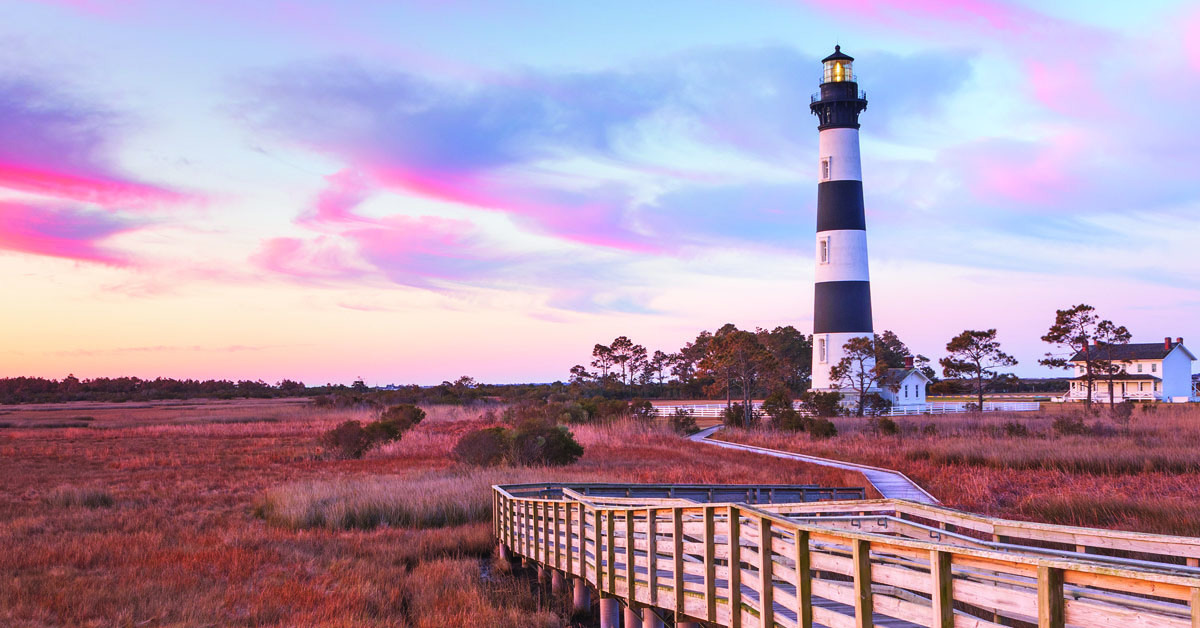The Atlantic Region has proven to have a surprisingly resilient economy of late. This region, which is anchored by Washington, D.C., and includes the states of Maryland, North Carolina, South Carolina, Virginia and West Virginia, has made an impressive economic recovery after it was hit hard last year by the COVID-19 pandemic.
In second-quarter 2020, the Atlantic Region’s gross domestic product (GDP) sustained declines of 20% to 33% on a year-over-year basis, depending on the state. A year later, however, the region has slashed its unemployment levels and annualized GDP for Q2 2021 was on the rise, with increases ranging from 5.8% in Virginia to 7.3% in West Virginia.

In Washington, D.C., the region’s largest city with about 6.3 million metro-area residents, GDP grew annually by 7.2% in Q2 2021. According to the U.S. Bureau of Labor Statistics, metro-area employment grew by more than 200,000 jobs year over year this past April and May, with many new jobs added in the leisure, hospitality, education and health-services sectors.
Maryland’s economy, which experienced 6.1% yearly GDP growth in Q2 2021, has strong technology, defense and trade sectors. The state is home to six Fortune 500 companies, including aerospace titan Lockheed Martin and the world’s largest spice company, McCormick & Co.
Maybe the biggest surprise in this region is the economic performance of West Virginia. Although the 2020 census showed that the state had lost 3.2% of its population since 2010, West Virginia’s economy grew by 7.3% during the 12 months ending this past June, tops in the region. One reason for the improvement was a statewide rebound in coal production, which rose by 19% year over year in first-half 2021.
Virginia’s unemployment rate in September 2021 dipped to 3.8%, the lowest in the region. The state has a diverse economy that includes a large farming sector as well as growing aerospace, technology and biotechnology industries. Northern Virginia is home to a variety of federal government agencies, including the Department of Defense and the CIA.
North Carolina also has developed a diversified economy that includes agriculture, food processing, financial services and technology. Charlotte, the state’s largest city, has grown into the nation’s second-largest banking center (measured by assets held) and is home to Bank of America, one of the largest banks in the country. The state capital of Raleigh is part of the Research Triangle Park, a large area that is home to more than 300 companies focused on technology and health care research.
Like many states in the Atlantic Region, South Carolina has utilized business-friendly policies to continue expanding its economy. It has developed strong manufacturing and tourism industries along with a financial-services sector that has attracted a number of corporate offices — including Schaeffler Group USA, a division of a German manufacturer of automotive, aerospace and industrial parts. The Port of Charleston also has developed into a major East Coast cargo hub. ●

Baltimore’s economy is beginning to perk up this year as the impact of the pandemic wanes. Labor statistics show that Baltimore’s metro-area unemployment rate dropped from 8.2% in August 2020 to 5.3% in August 2021.
Like much of the rest of the country, however, the commercial office sector has been slower to recover. Cushman & Wakefield reported that the vacancy rate for the nation’s 20th-largest metro area rose from 12.3% in fourth-quarter 2019 to 13.3% in third-quarter 2021. One sign of stability is that Baltimore’s average asking rents rose modestly during the same period, increasing from $23.93 per square foot in Q4 2019 to $24.16 per square foot in Q3 2021.
The Baltimore metro area experienced negative net absorption of some 155,000 square feet through the first three quarters of this year, although Q3 2021 saw positive absorption of 125,000 square feet. Despite the sluggish office market, more than 900,000 square feet of new space is planned across the metro area, with nearly half being built in the city center.
Focus: Technology
In the heart of North Carolina’s Research Triangle Park (RTP) — an area defined by the cities of Chapel Hill, Durham and Raleigh — a new 220,000-square-foot office tower is expected to rise in the coming years. It will be the latest anchor for a new expansion project at RTP, the nation’s largest planned research center. The park is home to an estimated 55,000 workers, and development plans announced this past August will add 2 million square feet of office and retail space, as well as new housing.
The park’s expansion plans are the latest sign that the Atlantic Region has developed into one of the nation’s hottest tech centers. Companies in the RTP are known for innovative work in information technology, pharmaceutical sciences, microelectronics and other fields.
To the north, Virginia also is making a name for itself in technology. The Dulles Technology Corridor in Northern Virginia and the VA Bio+Tech Park in Richmond have drawn a variety of technology and health care companies to the state.
What the Locals Say
“In the Southeast, as with any commercial real estate sector, the buyer ultimately won’t choose to close on a property if the economics don’t pencil. If the deal meets or exceeds the return based on the desired return, the buyer is very likely to close. At present, with steady demand for residential product, low interest rates and a strong economy, land deals are transacting and sellers are mostly getting the elevated land prices they are seeking. At this point, the demand for land has not diminished. The best sites are often not hitting the active listing market.”

Hunter Suggs
Director of commercial real estate
National Land Realty
3 Cities to Watch
Greenville
Nestled in the foothills of the Blue Ridge Mountains in northwestern South Carolina, Greenville has a population of about 71,000 but is ranked as the state’s fastest-growing city. In recent decades, Greenville has reinvented itself from a textile manufacturing hub to a burgeoning corporate center, welcoming more than 250 international businesses from 26 countries — including branches of BMW and Michelin North America. More than 10 colleges and universities are located in the metro area.

Raleigh
Listed on many best-places-to-live lists, Raleigh is one of the region’s leading centers for higher education and technology. The second-largest city in North Carolina, Raleigh had a 2020 population of about 468,000 people. It is among the fastest-growing metro areas in the country with a population of about 1.41 million. Home to North Carolina State University, Raleigh is part of the RTP, one of the nation’s centers for technology and health care research, and the city has divisions of Cisco Systems, IBM and Pfizer.

Richmond
This historic Virginia city has about 227,000 residents and is located along the James River. A legal and financial center, Richmond is home to the U.S. Court of Appeals for the Fourth Circuit as well as a branch of the Federal Reserve. Six Fortune 500 companies are located in Richmond, including tobacco maker Altria Group, CarMax, Dominion Energy and health care company Owens & Minor. The city also is home to the VA Bio+Tech Park, a leading incubator for biotechnology and life-sciences companies.
Sources: City of Raleigh; Cushman & Wakefield; Economic Development Partnership of North Carolina; Greater Richmond Partnership; Maryland Department of Commerce; Military One Source; RTP.org; Research Triangle Park; South Carolina Department of Commerce; U.S. Bureau of Economic Analysis; U.S. Bureau of Labor Statistics; U.S. Census Bureau; U.S. Department of Labor; U.S. Energy Information Administration; U.S. News & World Report; VA Bio+Tech Park; Virginia Economic Development Partnership; Wake County Economic Development




